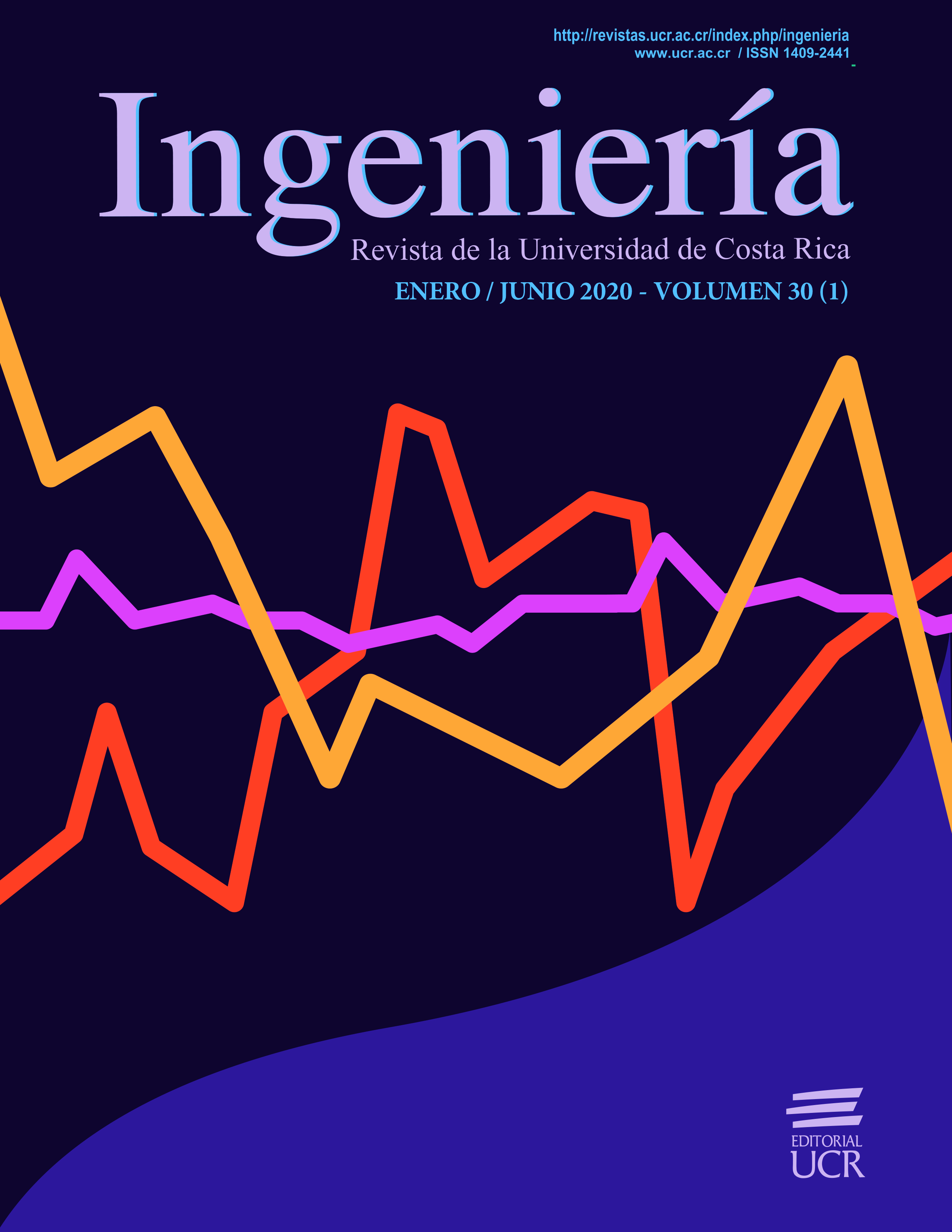Abstract
A power loss analysis of the new 1-FB-1 DC/DC converter is proposed. The resulting model can be used to better predict the real DC-DC conversion rates that will be obtained when practical elements are implemented; as well as, a better heat loss estimation. Four distinct power loses are incorporated to the ideal canonical model: copper power loss at the transformer, transistor conduction power loss, diode conduction power loss and equivalent series resistor power loss at the output capacitor. The loss analysis establishes the framework to determine its feasibility for being used as a power supply in portable computers, hand-held devices, and communication equipment.
References
Erickson, R. & Maksimovic, D. (2001). Fundamentals of power electronics. Norwell, MA: Kluwer Academic Publishers.
Gólcher, L (2014). Nuevo Convertidor DC/DC 1-FB-1. Ingeniería Revista de la Universidad de Costa Rica, 22, 13-23.
Lee, H. & Hua, Z. (2013). Power- & Area-Efficiency Enhancement Techniques of Switched-Capacitor Power Converters for Low-Power Applications. IEEE International Conference of Electron Devices and Solid-state Circuits, 978-1-4673-2523-3.
Lu, Yan. (2018). A Reconfigurable Switched-Capacitor DC-DC Converter and Cascode LDO for Dynamic Voltage
Scaling and High PSR. IEEE Asia Pacific Conference on Circuits and Systems, 509-511.
Middlebrook, R. & Çuk, S. (1983). Advances in Switched-Mode Power Conversion. Pasadena, CA: TESLAco.
Vaisband, I., Saadat, M. & Murmann, B. (2014). A Closed-Loop Reconfigurable Switched-Capacitor. DC-DC Converter for Sub-mW Energy Harvesting Applications. IEEE TRANSACTIONS ON CIRCUITS AND SYSTEMS, 1549-8328.


